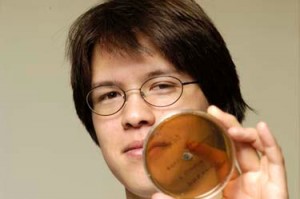Fungi can influence nearly every aspect of ecosystem function, especially processes that occur in soils. For instance, they can conduct decomposition as they break down organic material to obtain energy and nutrients. In doing so, they release carbon dioxide as a by-product. On the other hand, they can also produce their own organic compounds that form residues in soils for years to decades or longer; in this way, they can contribute to soil carbon storage. They also mediate the phosphorus and nitrogen cycles by releasing extracellular enzymes that convert organic P or N compounds to smaller products or mineral forms. In fact, this step often limits the rate at which N cycles between plants, microbes, and the soil. A subset of fungi (mycorrhizal fungi) can even alter the rate at which C enters ecosystems by augmenting net primary productivity of plants.
This diverse collection of ecosystem functions is paralleled by the taxonomic, physiological, and morphological diversity of fungi themselves. There are an estimated millions of fungal species worldwide, and we have yet described only a small portion of them. Even fewer have been characterized ecologically, especially in natural settings. Nevertheless, we already know that fungi vary widely in traits that are expected to influence ecosystem function, and in their responses to environmental conditions.
Accordingly, our research broadly addresses the role of fungi in mediating ecosystem responses to global change. Our overarching goal is to improve predictions of future trajectories of global change, by incorporating feedbacks governed by fungi. This topic is challenging to study, because fungi operate at the microscopic scale, yet elicit consequences for biogeochemical functions at the global scale. Thus, our research targets scales ranging from the molecule to the globe. Concurrently, we develop conceptual frameworks to link these scales, specifically by suggesting how ecosystem models can better incorporate microbial ecology.
Current research projects
Biogeochemical consequences of microbial evolution under drought (US DOE)
Acquisition of a Zeiss PALM Microscope for Molecular and Microbiological Research (US NSF)
A trait-based framework for linking microbial communities with carbon transformations under precipitation change (US DOE)
